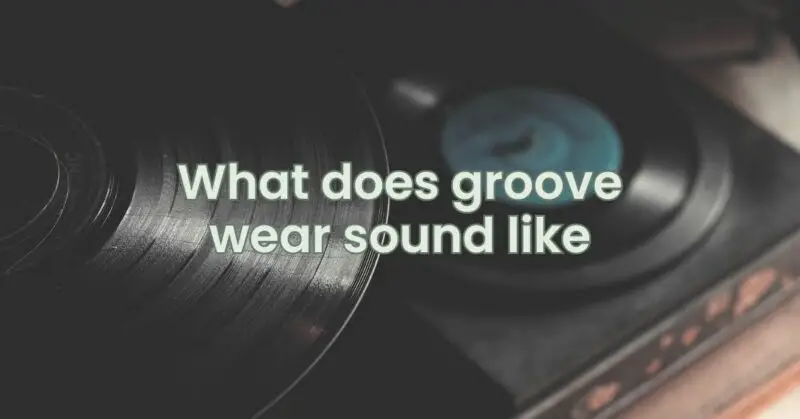Vinyl records have a unique charm, offering a warm and nostalgic sound that many music enthusiasts cherish. However, over time, vinyl records can suffer from wear and tear due to repeated use and improper handling. One common form of degradation is groove wear, which affects the sound quality and listening experience. In this article, we will explore what groove wear sounds like, how to identify it, and what steps you can take to mitigate its effects.
What is Groove Wear?
Groove wear is the result of friction between the stylus (needle) and the grooves on a vinyl record. As the stylus traverses the grooves during playback, it encounters resistance and gradually erodes the delicate vinyl material. This wearing down of the grooves alters the physical properties of the record, leading to a degradation in sound quality and, in some cases, audible artifacts during playback.
What Does Groove Wear Sound Like?
- Surface Noise: As groove wear progresses, you may notice an increase in surface noise, which includes light crackling, hissing, or static-like sounds. These noises become more noticeable during quiet passages and between tracks.
- Clicks and Pops: Groove wear can create irregularities in the groove walls, resulting in small imperfections. When the stylus encounters these imperfections, it produces clicks and pops, disrupting the smooth audio playback.
- Reduced High-Frequency Response: As the grooves wear down, the ability of the stylus to accurately track the high-frequency information decreases. This leads to a loss of clarity and definition in the treble frequencies, causing the music to sound dull or muted.
- Distortion: Groove wear can cause the stylus to skip or jump within the groove, resulting in momentary distortions during playback. This effect is more common in heavily worn or damaged records.
- Loss of Stereo Separation: Asymmetrical groove wear can lead to imbalanced tracking between the left and right channels, causing a reduction in stereo separation. This can make the music sound congested or center-heavy.
Identifying Groove Wear
To identify groove wear in your vinyl records, follow these steps:
- Visual Inspection: Examine the record’s surface under good lighting for visible signs of wear, such as visible scuffs, scratches, or groove deformation.
- Listen Closely: Pay attention to the playback, especially during quiet passages, where surface noise and pops are more noticeable.
- Compare with Mint Record: If possible, compare the sound quality with a mint or well-preserved copy of the same record. Differences in sound quality may indicate groove wear.
Mitigating Groove Wear Effects
While groove wear is an inevitable part of vinyl record usage, you can take steps to minimize its effects and preserve the sound quality:
- Proper Handling: Handle your records with care, avoiding contact with the grooves and holding them by the edges.
- Correct Tracking Force: Ensure your turntable’s tracking force is set correctly, following the cartridge manufacturer’s recommendations.
- Regular Cleaning: Keep your records clean and dust-free by using a carbon fiber brush and a gentle record cleaning solution.
- Rotate Your Collection: Play different records regularly to distribute the wear evenly among your collection.
- Upgrade Equipment: Invest in high-quality turntables, cartridges, and stylus to reduce the risk of groove damage caused by low-quality components.
Conclusion
Groove wear is a common occurrence in vinyl records, but its impact can be minimized with proper care and maintenance. Being able to identify the signs of groove wear allows you to take appropriate measures to preserve your vinyl collection and enjoy the best possible sound quality. By handling your records with care, using the correct tracking force, and maintaining a clean playback environment, you can ensure that your vinyl records continue to provide a rich and satisfying listening experience for years to come. Remember, preserving vinyl records is not just about preserving sound quality; it is also about cherishing the nostalgia and cultural significance of these timeless musical treasures.


